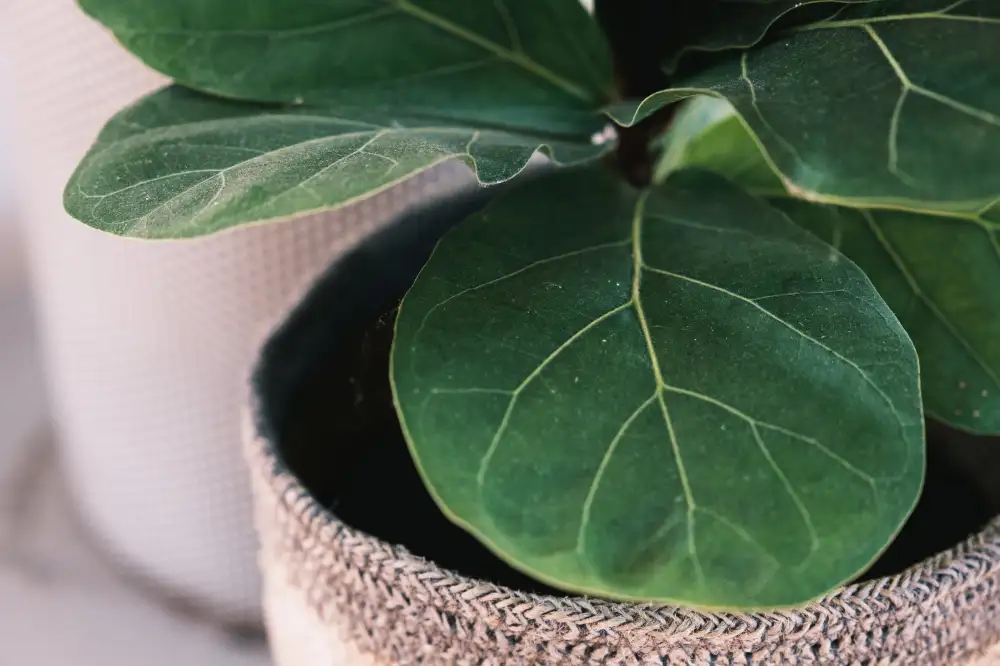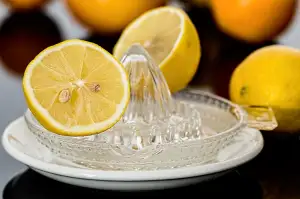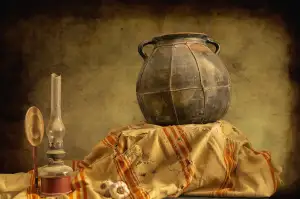Revive Your Rusty Cast Iron Skillet: Expert Tips on Cleaning and Restoring

- Explanation of why cast iron skillets rust over time
- Materials needed for cleaning a rusty cast iron skillet
- Step-by-step instructions on cleaning the skillet:
- 1. Preparing the skillet for cleaning
- 2. Removing loose rust with a scrub brush or steel wool
- 3. Applying a vinegar solution to dissolve remaining rust
- 4. Scrubbing the skillet with a paste made of baking soda and water
- 5. Rinsing and drying the skillet thoroughly
- 6. Seasoning the skillet to prevent future rusting
- Tips for preventing rust on a cast iron skillet
A cast iron skillet is a versatile and beloved kitchen tool that has stood the test of time. Its ability to distribute heat evenly and retain it makes it perfect for searing, frying, and baking. However, to ensure its longevity and optimal performance, regular cleaning and maintenance are essential.
Keeping your cast iron skillet clean not only enhances its cooking abilities but also prevents rust from forming. Rust can compromise the integrity of the skillet, affecting both its appearance and functionality. By properly caring for your cast iron skillet, you can enjoy delicious meals for years to come.
Explanation of why cast iron skillets rust over time
Cast iron skillets rust over time due to their composition and exposure to moisture. Cast iron is made primarily of iron, which is prone to oxidation when it comes into contact with water or air. When the skillet is not properly dried after use or stored in a humid environment, moisture can accumulate on its surface, leading to the formation of rust. Additionally, acidic foods can also contribute to rusting as they react with the iron in the skillet. Regular maintenance is crucial to prevent rust and preserve the longevity of a cast iron skillet.
Materials needed for cleaning a rusty cast iron skillet
To clean a rusty cast iron skillet, you will need a few materials. Firstly, gather a scrub brush or steel wool to remove loose rust. These tools are effective in scraping away the surface rust without damaging the skillet. Next, you will need white vinegar, which acts as a rust dissolver. This acidic solution helps break down the remaining rust on the skillet's surface. Additionally, prepare baking soda and water to create a paste for scrubbing. Baking soda is an excellent abrasive that aids in removing stubborn rust stains. Lastly, ensure you have clean water for rinsing and drying the skillet thoroughly after cleaning it.
Step-by-step instructions on cleaning the skillet:
4.1. Preparing the skillet for cleaning: Start by removing any food residue or stuck-on particles from the skillet using a plastic scraper or spatula. Avoid using soap as it can strip away the skillet's seasoning.
4.2. Removing loose rust with a scrub brush or steel wool: Gently scrub the surface of the skillet with a scrub brush or steel wool to remove any loose rust. Be careful not to scrub too hard and damage the skillet's seasoning.
4.3. Applying a vinegar solution to dissolve remaining rust: Mix equal parts white vinegar and water in a bowl or spray bottle. Apply this solution to the rusty areas of the skillet and let it sit for about 10-15 minutes to allow the vinegar to dissolve the remaining rust.
4.4. Scrubbing the skillet with a paste made of baking soda and water: Create a paste by mixing baking soda and water until it forms a thick consistency. Use this paste to scrub away any stubborn rust spots on the skillet's surface, applying gentle pressure.
4.5. Rinsing and drying the skillet thoroughly: Rinse off the baking soda paste from the skillet under warm running water, ensuring all traces are removed. Pat dry with a clean towel or place it over low heat on your stovetop until completely dry.
4.6 Seasoning the skillet to prevent future rusting: Apply a thin layer of oil (such as vegetable oil, flaxseed oil, or lard) all over the inside and outside of the skillet, including its handle and sides. Place it upside down in an oven preheated to 350°F (175°C) for about an hour, allowing it to absorb and bake in the oil.
By following these step-by-step instructions, you can effectively clean your rusty cast iron skillet and restore its functionality while preventing future rusting issues
1. Preparing the skillet for cleaning
Before diving into the process of cleaning a rusty cast iron skillet, it is crucial to properly prepare the skillet. Start by removing any food residue or debris from the surface using a stiff brush or scraper. Avoid using soap or harsh chemicals as they can strip away the skillet's seasoning. Once the surface is free from loose particles, rinse it with warm water and pat dry with a clean cloth. It is essential to ensure that no moisture remains on the skillet before proceeding with the rust removal process.
2. Removing loose rust with a scrub brush or steel wool
To remove loose rust from a cast iron skillet, you can use a scrub brush or steel wool. These tools are effective at scrubbing away the surface rust without damaging the skillet's seasoning. Gently scrub the rusty areas in circular motions, applying a bit of pressure to lift off the loose rust particles. Be sure to cover all sides of the skillet, including the bottom and handle. This step will help prepare the skillet for further cleaning and restoration.
3. Applying a vinegar solution to dissolve remaining rust
To dissolve the remaining rust on your cast iron skillet, you will need a vinegar solution. Vinegar is an effective natural cleaner due to its acidic properties. Mix equal parts of white vinegar and water in a bowl or container large enough to submerge the skillet. The acidity of the vinegar helps break down the rust, making it easier to remove. Submerge the rusty areas of the skillet in the vinegar solution for at least one hour, or overnight for more stubborn rust. This will allow the solution to penetrate and dissolve the rust. After soaking, use a scrub brush or steel wool to gently scrub away any loosened rust particles. Rinse the skillet thoroughly with water to remove any remaining vinegar residue before moving on to the next step of cleaning and restoring your cast iron skillet.
4. Scrubbing the skillet with a paste made of baking soda and water
Once you have removed the loose rust from your cast iron skillet, it's time to tackle the remaining stubborn rust stains. To do this, create a paste by mixing equal parts baking soda and water in a small bowl. The abrasive nature of baking soda helps to gently scrub away the remaining rust without damaging the skillet's surface.
Using a sponge or cloth, apply the baking soda paste to the affected areas of the skillet. Gently scrub in circular motions, focusing on the rust spots. The baking soda will work to lift and dissolve the rust, leaving your skillet looking clean and restored.
Continue scrubbing until all traces of rust have been removed. You may need to reapply more paste as you go along. Be patient and thorough in this step to ensure that all rust is completely eradicated from your skillet.
Once you are satisfied with the results, rinse the skillet thoroughly with warm water to remove any residual baking soda paste. Make sure to remove all traces of the paste as it can leave a gritty residue if not properly rinsed.
After rinsing, dry your cast iron skillet immediately using a clean towel or paper towels. It is crucial to prevent any moisture from lingering on the surface as this can lead to future rust formation.
Now that your skillet is clean and free from rust, it's time for the final step – seasoning. Seasoning involves applying a thin layer of oil or fat onto the surface of your cast iron skillet to create a protective barrier against moisture and prevent future rusting.
5. Rinsing and drying the skillet thoroughly
After scrubbing the skillet with the baking soda paste, it is crucial to rinse it thoroughly to remove any residue. Use warm water and a sponge or cloth to ensure all the paste is washed away. Make sure to pay extra attention to the corners and crevices of the skillet. Once rinsed, dry the skillet completely using a clean towel or paper towels. It is important to remove all moisture from the surface of the skillet as any remaining water can lead to rust formation. Air drying is not recommended as it can promote rusting.
6. Seasoning the skillet to prevent future rusting
After cleaning and drying your cast iron skillet, it's crucial to season it properly to create a protective layer that prevents rust from forming in the future. Seasoning involves applying a thin coat of oil to the skillet and heating it at a high temperature.
To season your skillet, start by preheating your oven to 350°F (175°C). Next, apply a small amount of vegetable oil or melted shortening to the entire surface of the skillet, including the handle. Make sure to use a paper towel or cloth to evenly distribute the oil and remove any excess.
Place the oiled skillet upside down on the middle rack of your oven. This allows any excess oil to drip off during the seasoning process. To catch any drips, you can place aluminum foil on the lower rack.
Bake the skillet for one hour, then turn off the oven and let it cool inside. This gradual cooling helps in creating a strong bond between the oil and the cast iron surface.
Repeat this seasoning process several times, especially if you're restoring an old or heavily rusted skillet. Each round of seasoning adds another layer of protection against rust.
Remember that using oils with low smoke points like flaxseed or grapeseed oil is not recommended for seasoning as they tend to become sticky over time. Stick with oils like vegetable, canola, or even lard for best results.
By regularly seasoning your cast iron skillet after each use or when needed, you'll maintain its non-stick surface and protect it from rusting. A well-seasoned skillet will develop a beautiful patina over time, enhancing its cooking performance and ensuring its longevity.
Tips for preventing rust on a cast iron skillet
To prevent rust on your cast iron skillet, follow these tips:
1. Dry thoroughly: After washing, make sure to dry the skillet completely to remove any moisture that can lead to rust formation.
2. Apply a thin layer of oil: Before storing, apply a thin coat of vegetable oil or shortening to the skillet's surface. This creates a protective barrier against moisture and helps maintain its seasoning.
3. Avoid soaking: Avoid soaking your cast iron skillet in water for extended periods as this can cause rusting. Instead, clean it immediately after use.
4. Use gentle cleaning methods: Avoid using harsh detergents or abrasive cleaners that can strip away the seasoning and expose the iron to moisture.
5. Store properly: Store your cast iron skillet in a dry place with good air circulation. If stacking with other cookware, place a paper towel between them to absorb any excess moisture.
By following these preventive measures, you can keep your cast iron skillet in excellent condition and enjoy its benefits for years to come.
In conclusion, regular maintenance is crucial for ensuring the longevity of your cast iron skillet. By following the proper cleaning and seasoning techniques, you can prevent rust and keep your skillet in excellent condition for years to come. Remember to always dry it thoroughly after each use and apply a thin layer of oil before storing. With proper care, your cast iron skillet will continue to be a reliable tool in your kitchen, providing you with delicious meals and lasting memories.
Published: 25. 02. 2024
Category: Home



